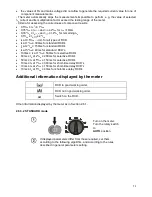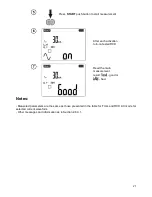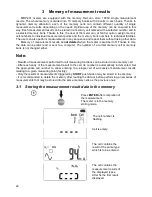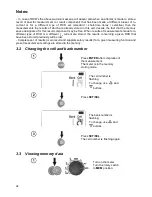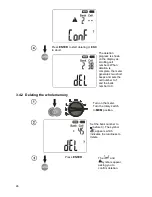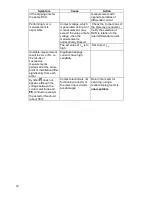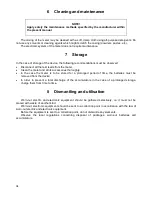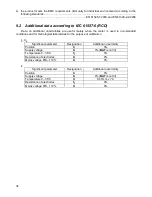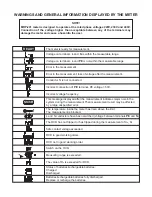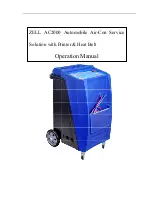
33
5.3 General principles regarding using Ni-MH accumulators
- If you do not use the device for a prolonged period of time, then it is recommended to remove the
accumulators and store them separately.
- Store the accumulators in a dry, cool and well ventilated place and protect them from direct sunlight.
The temperature of the environm
ent in the case of prolonged storage should not exceed 30ªC. If the
accumulators are stored for a long time in a high temperature, then the occurring chemical processes
may reduce their lifetime.
- Accumulators NiMH resist normally 500-1000 charging cycles. The accumulators reach their
maximum capacity after being formatted (2-3 charge and discharge cycles). The most important
factor which influences the lifetime of an accumulator is the depth of discharge. The deeper the
discharge of the accumulator, the shorter its lifetime.
- The memory effect is limited in the case of NiMH accumulator. These accumulators may be charged
at any point with no serious consequences. However, it is recommended to discharge them
completely every few cycles.
- During storage of Ni-MH accumulators they are discharged at the rate of approximately 30% per
month. Keeping accumulators at high temperatures may accelerate this process even 100%. In order
to prevent excessive discharge of accumulators, after which it would be necessary to format them, it
is recommended to charge the accumulators from time to time (even if not in use).
- Modern fast chargers detect both too low and too high a temperature of accumulators and react to
the situation adequately. Too low a temperature should prevent the start of the process of charging,
which might damage the accumulator irreparably. An increase of the temperature of the accumulator
is a signal to stop charging and is a typical phenomenon. However charging at a high temperature of
the environment apart from reducing the lifetime causes an accelerated increase of the temperature
of the accumulator, which will be not charged to its full capacity.
- Remember that in the case of quick charging accumulators are charged to approximately 80% of
their capacity; better results may be obtained if the process of charging is continued: the charger goes
then to the phase of charging with a low current and after next couple of hours the accumulators are
charged to their full capacity.
- Do not charge or use accumulators in extreme temperatures. Extreme temperatures reduce the
lifetime of batteries and accumulators. Avoid placing devices powered from accumulators in very hot
environments. The nominal working temperature must be absolutely observed.

